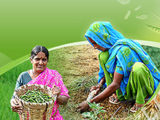The development of ICT links that facilitate communication between an expert and a farmer or government advisor is the first DIT technology [2.1] to be considered below. This is followed by fact sheet tools that are delivered online and as smart phone apps, providing a new medium that complements information previously provided by published (hard copy) pest and disease booklets or guides [2.2]. Digital identification keys, based on traditional, pathway or dichotomous keys are described next [2.3], followed by interactive matrix keys, used for pest identification and sympton-based crop diagnostics [2.4]. Specialised image galleries and databases can provide identification tools, in their own right, as well as providing valuable support to other DITs [2.5]. A brief account of some examples of emerging AI applications to pest identification [2.6] and a search tool for DIT’s for biosecurity [2.7] completes this initial review
2.1. DITs that link practitioners directly to experts
Digital tools that link biosecurity officials, crop advisors and farmers with a taxonomist or experienced field expert are of two types: remote diagnostics and community networks. For biosecurity officials and crop advisors in remote regions, such tools may be the only way they can obtain expert advice to identify intercepted organisms or diagnose crop symptoms.
Remote diagnostics is a web-based, real-time, interactive advisory system based on an interlinked microscopy network or internet connection. It enables quarantine officers to display the specimen concerned to relevant experts via the Internet, allowing the expert to ask for different aspects of the specimen to be viewed, helping in the process of making an identification.

Remote diagnostic systems have been developed in Australia and Southeast Asia for use in national biosecurity operations. A similar system is currently being used by the Ministry of Primary Industry in New Zealand to support the identification of intercepted specimens in Pacific Island countries Thompson et al. (2011).
Providing real-time diagnostic advice remotely can be affected by slow internet speeds and by difficulties in scheduling a link convenient to both parties on different time zones. Perhaps a more important role that remote microscopy can play is to create ‘virtual taxonomic laboratories’ that enable taxonomists in different locations and countries to work together, view each other’s specimens, and share information in real time.
Virtual interactions between personnel in plant protection labs in Australia and Thailand are also facilitating mutual education and collaboration. This is especially valuable for dealing with and confirming specific exotic specimens and biosecurity threats.


PestNet, launched in December 1999, is an early example of a community network. Using a Yahoo Group email system, plant protection workers and farmers posted queries to the PestNet community, often attaching photographs of a detected organism or observed symptoms. Experts and other members of the community then sent an email response, which frequently led to further email discussion. PestNet was initially targeted at remote workers throughout the Pacific Islands, providing them with international biosecurity and plant protection support. Subsequently, the network expanded to Asia and other regions of the world.
The original PestNet service was later updated to an online service that supports both Android and Apple applications – see screen shot – and at the same time was combined with the digital fact sheet service Pacific Pests, Pathogens and Weeds, described in the following section. A similar community support network has been developed at Pennsylvania State University, USA, called Plant Village. Since this system has now included an AI component, it will be discussed later in section 2.6 with other AI support systems.
In China, a community-based system provides a free, open, and interactive agricultural service platform that uses mobile interconnection with agricultural experts who provide agricultural technology services to farmers. The question-and-answer function – see screen shot – provides technical training for both field technicians and farmers.

